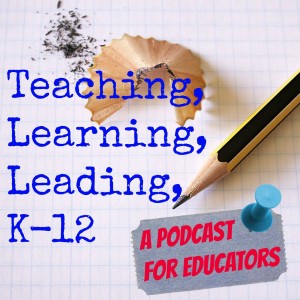
Teaching Learning Leading K-12
Education

This is the conclusion of a three-part series on Formative Assessment in the Classroom.
If you haven’t listened to the first two parts they are Episodes 93 and 94.
In this three-part journey, I have introduced you to several characterizations of kids you might have in your classes:
Mr. Compliant, The Recluse, The Answerer, The Comedian, The Disruptor, The Questioner, and Love Struck. (I explain each of these in the episode.)
By the way, they sound a little like characters from the 1960s Batman TV show…
After reading and knowing who they are can we agree that…
Kids are different from each other.
Can we agree on this?
If so, we need to make sure that we are taking the time to check if they are following you. It is important to see if they get what you are introducing them to, you know ... do they get the content?
The way to do this is to plan for formative assessment opportunities during your lessons.
In the second part of this series I explained my working definition of Formative Assessment:
Formative assessment is the purposeful use of activities that will not be graded that will reveal to the teacher what the kids know and don’t know. The results of these activities will be used to adjust instruction to help the kids develop a better understanding, over-come confusion, or move on because they already get it.
In today’s episode, I introduce you to formative assessment tools.
Listed below are a few formative assessment tools that teachers are using in their classrooms. Each of these is linked in my Pinterest board called Assessment Strategies.
10 Tools for Formative Assessment in the Classroom:
1. Five Powerful Questions
2. Ten Assessments in 90 Seconds
3. Marzano’s Question Stems
4. Tickets Out The Door
5. Stickies
6. Red Light (Stop Light)
7. The Mini-Whiteboard
8. Craft sticks
9. Craft Sticks with mini-whiteboards
10. Charts
Go here to read my blog article on formative assessment.
Keep in mind that all kids are not the same; hence, they need you to figure out whether they are following you and understanding the content. The way to do this is with formative assessment. These activities are purposeful, not graded and the information gathered is used to adjust instruction.
In this series, I talked about the Why, the What, and the Tools.
So have you made plans to take a look at my Pinterest boards?
Do so now.
Go check out the many ideas for formative assessments that are linked on my site.
Have fun working with the kids and helping them get your content!
Nothing better than when that light bulb comes on!
Length: 33:44
More Episodes
 2024-10-24
2024-10-24
 150
150
 2024-10-17
2024-10-17
 142
142
 2024-10-11
2024-10-11
 121
121
 2024-10-04
2024-10-04
 158
158
Create your
podcast in
minutes
- Full-featured podcast site
- Unlimited storage and bandwidth
- Comprehensive podcast stats
- Distribute to Apple Podcasts, Spotify, and more
- Make money with your podcast
It is Free
- Privacy Policy
- Cookie Policy
- Terms of Use
- Consent Preferences
- Copyright © 2015-2024 Podbean.com





